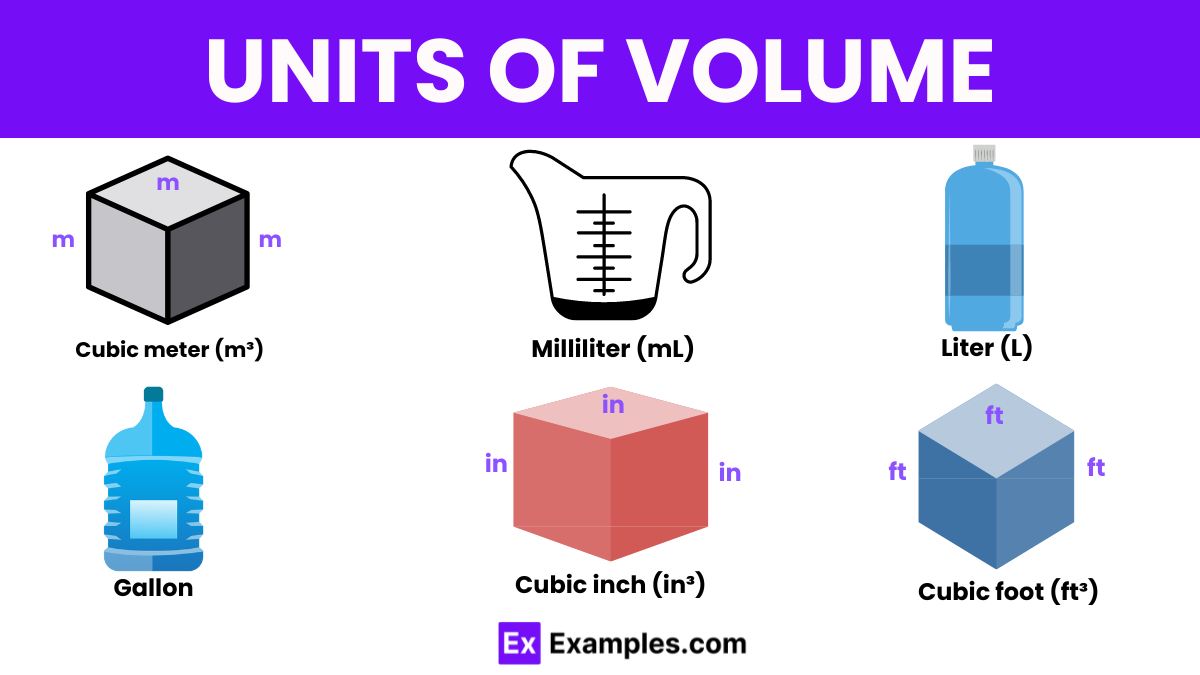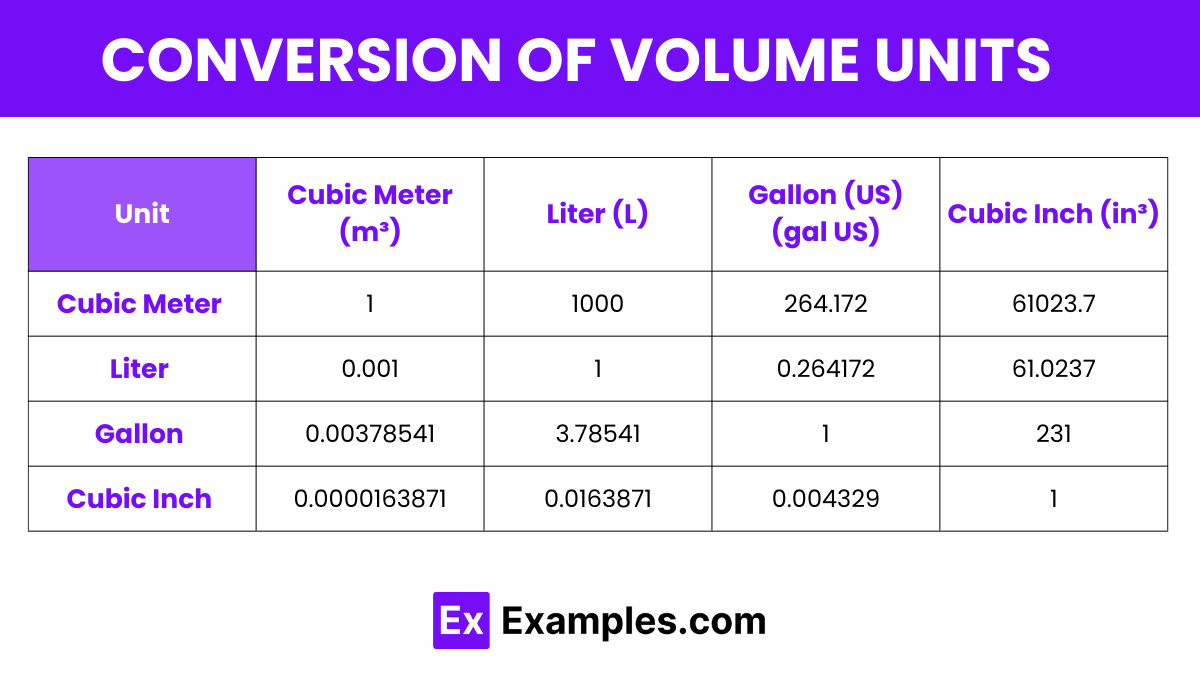Which of the following is a unit of volume in the metric system?
Meter
Liter
Gram
Joule


Volume measures the amount of space that a substance or object occupies or that is enclosed within a container. This fundamental concept is pivotal in various scientific and everyday contexts. To accurately quantify volume, several units are used globally, each tailored to specific measurements and applications.
The cubic meter (symbol: m³) is the official unit of volume in the International System of Units (SI). It represents the volume of a cube with sides of one meter each. One cubic meter equals 1,000 liters or about 35.3 cubic feet.
Common Use: Cubic meters are used universally in various fields such as engineering, construction, and commerce to measure the volume of liquids, solids, and gases. For instance, water consumption is often measured in cubic meters.
The cubic centimeter (symbol: cm³) is the unit of volume in the centimeter-gram-second (CGS) system of units. It is defined as the volume of a cube with sides of one centimeter in length.
Common Use: Although the cubic meter is more commonly used today, the cubic centimeter remains widely used in medicine and automotive engineering to measure small volumes, particularly in fluid measurements and engine displacement.
| Unit | Symbol |
|---|---|
| Cubic Meter | m³ |
| Liter | L |
| Milliliter | mL |
| Gallon (US) | gal (US) |
| Gallon (UK) | gal (UK) |
| Cubic Inch | in³ |
| Cubic Foot | ft³ |
| Cubic Centimeter | cm³ |
The cubic meter is the SI unit of volume, representing the volume of a cube with sides of one meter each. It is widely used in many scientific and engineering fields to measure large volumes, such as in construction and large-scale water management.
A liter is a unit of volume that is commonly used in everyday situations around the world, especially for measuring liquids in the culinary and automotive industries. It is equivalent to one cubic decimeter.
The milliliter is a smaller unit of volume used extensively in cooking, medicine, and in the science lab. It measures the volume of a cube that is 1 centimeter on each side.
The US gallon is used in the United States for commerce and in everyday life, particularly for fuels and other liquids. It is defined as 231 cubic inches.
The UK gallon, or imperial gallon, is larger than the US gallon and was historically used in the UK and other countries for trade and transportation of goods like fuel.
A cubic inch is a unit of volume used primarily in the United States for measuring the volume of solid materials and is commonly used in automotive and other mechanical contexts.
A cubic foot is an imperial and US customary unit of volume used widely in the United States for measuring larger volumes, such as refrigerator capacity or freight containers.
The cubic centimeter is a unit of volume that is particularly useful in medicine and automotive industries for measuring small volumes, often in contexts of fluid volumes or engine displacements.

Here is a table format showing conversions between commonly used units of volume: Cubic Meter (m³), Liter (L), Gallon (US) (gal US), and Cubic Inch (in³). The values provided are conversion factors for turning one unit into the other:
| Unit | Cubic Meter (m³) | Liter (L) | Gallon (US) (gal US) | Cubic Inch (in³) |
|---|---|---|---|---|
| Cubic Meter (m³) | 1 | 1000 | 264.172 | 61023.7 |
| Liter (L) | 0.001 | 1 | 0.264172 | 61.0237 |
| Gallon (US) (gal US) | 0.00378541 | 3.78541 | 1 | 231 |
| Cubic Inch (in³) | 0.0000163871 | 0.0163871 | 0.004329 | 1 |
Volume is measured by determining the space an object occupies. It’s quantified using water displacement or by mathematical formulae for regular shapes.
The basic SI unit for volume is the cubic meter, representing the volume of a cube with one-meter sides.
Commonly, volume is measured in liters, milliliters, cubic centimeters, gallons, and cubic feet, facilitating everyday and scientific calculations.
Text prompt
Add Tone
10 Examples of Public speaking
20 Examples of Gas lighting
Which of the following is a unit of volume in the metric system?
Meter
Liter
Gram
Joule
What is the equivalent of 1 cubic meter in liters?
10
100
1000
10000
Which unit is used to measure the volume of a small liquid quantity in a laboratory?
Cubic meter
Liter
Milliliter
Gallon
How many milliliters are there in a quart?
100
250
500
1000
What is the volume of a box measuring 2 meters by 3 meters by 4 meters in cubic meters?
12
24
18
8
Which unit of volume is commonly used in the United States to measure liquid capacity?
Liter
Gallon
Cubic meter
Deciliter
If a tank contains 5,000 milliliters of water, how many liters does it contain?
0.5
5
50
500
What is the volume of a sphere with a radius of 3 meters?
27π cubic meters
36π cubic meters
81π cubic meters
9π cubic meters
What is the volume of a 5-gallon bucket in liters?
18.93
22.73
25.00
30.00
Which unit would you use to measure the volume of a swimming pool?
Cubic centimeter
Milliliter
Liter
Cubic meter
Before you leave, take our quick quiz to enhance your learning!

